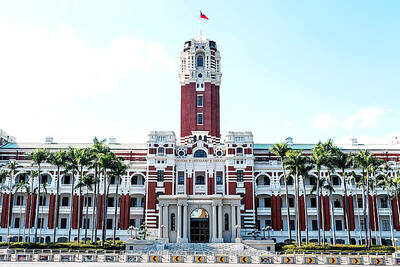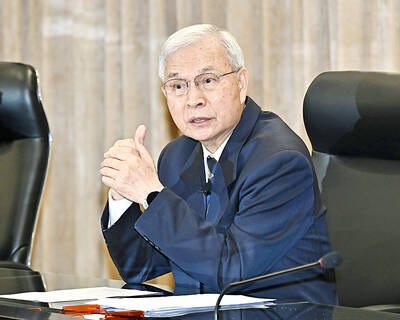Following Brazil’s trail, Indonesia is encouraging foreign and local investors to lease huge swathes of fertile countryside and help make the country a major food producer.
“Feed Indonesia, then feed the world,” was the recent call from Indonesian President Susilo Bambang Yudhoyono after the government announced plans to fast-track development of vast agricultural estates in remote areas like Papua and Borneo.
Between now and 2030 Indonesia expects to become one of the world’s biggest producers of rice, maize, sugar, coffee, shrimp, meats and palm oil, senior agriculture ministry official Hilman Manan said.
The world’s fourth-most populous country, with 235 million people, Indonesia has been self-sufficient in rice since 2008 and is already the top producer of palm oil.
“If everything goes well, Indonesia should be able to be self-sufficient in five years. And then it can start to feed the world,” said Sony Heru Priyanto, an expert at Satya Wacana Christian University.
The first area targeted for development is 1.6 million hectares in the southeast of the largely undeveloped province of Papua, around the town of Merauke.
The Merauke Integrated Food and Energy Estate will, the government hopes, create thousands of jobs and turn an impoverished and neglected corner of the Indonesian archipelago into a hive of activity.
“We chose Merauke because it’s the ideal place for food crop cultivation, such as rice, corn, soybean and sugar cane. Merauke district has 4.5 million hectares of land; 2.5 million hectares are ideal for cultivation,” Manan said. “The area is flat and has a good climate. Its soil is appropriate for those crops. Sumatra is already congested with other plantations, such as palm oil, and Kalimantan is already full of mining areas and many plantation areas also.”
He said Merauke’s population of 175,000 people could rocket to 800,000 if the plan takes off.
Foreigners will be able to control a maximum of 49 percent of any investing company, and will be offered incentives like tax breaks and reductions in customs and excise duties.
“In order to avoid any forms of monopolies or land grabbing, we’re limiting each company to a maximum of 10,000 hectares of land,” Manan said, stressing that the government was selling land use rights, not the land itself. He said interest had come from Japan, South Korea and the Middle East.
But analysts said the region’s biggest advantage — expanses of “empty” land — was also the main obstacle: The project will require up to US$5 billion in infrastructure investments, from a new port to roads and runways.
There is also opposition from small-scale farmers who say their traditional livelihoods could be threatened by the large-scale commercialization of agriculture.
“We reject the concept of the food estate. For us, food estates are another kind of land grabbing scheme. It’s like going back to the era of feudalism,” Indonesian Farmers Union official Kartini Samon said.
“The regular farmers’ land will be taken by big companies and the farmers will be left with nothing,” she said.
Such worries are well known in other countries with similar schemes, such as Brazil and Madagascar, where there is deep suspicion about food and bio-fuel companies monopolizing agricultural land.
There are also fears for the rights of indigenous Papuans, an ethnic-Melanesian minority who have long complained that their traditional lands are being unjustly exploited by outsiders.

The CIA has a message for Chinese government officials worried about their place in Chinese President Xi Jinping’s (習近平) government: Come work with us. The agency released two Mandarin-language videos on social media on Thursday inviting disgruntled officials to contact the CIA. The recruitment videos posted on YouTube and X racked up more than 5 million views combined in their first day. The outreach comes as CIA Director John Ratcliffe has vowed to boost the agency’s use of intelligence from human sources and its focus on China, which has recently targeted US officials with its own espionage operations. The videos are “aimed at

STEADFAST FRIEND: The bills encourage increased Taiwan-US engagement and address China’s distortion of UN Resolution 2758 to isolate Taiwan internationally The Presidential Office yesterday thanked the US House of Representatives for unanimously passing two Taiwan-related bills highlighting its solid support for Taiwan’s democracy and global participation, and for deepening bilateral relations. One of the bills, the Taiwan Assurance Implementation Act, requires the US Department of State to periodically review its guidelines for engagement with Taiwan, and report to the US Congress on the guidelines and plans to lift self-imposed limitations on US-Taiwan engagement. The other bill is the Taiwan International Solidarity Act, which clarifies that UN Resolution 2758 does not address the issue of the representation of Taiwan or its people in

US Indo-Pacific Commander Admiral Samuel Paparo on Friday expressed concern over the rate at which China is diversifying its military exercises, the Financial Times (FT) reported on Saturday. “The rates of change on the depth and breadth of their exercises is the one non-linear effect that I’ve seen in the last year that wakes me up at night or keeps me up at night,” Paparo was quoted by FT as saying while attending the annual Sedona Forum at the McCain Institute in Arizona. Paparo also expressed concern over the speed with which China was expanding its military. While the US

SHIFT: Taiwan’s better-than-expected first-quarter GDP and signs of weakness in the US have driven global capital back to emerging markets, the central bank head said The central bank yesterday blamed market speculation for the steep rise in the local currency, and urged exporters and financial institutions to stay calm and stop panic sell-offs to avoid hurting their own profitability. The nation’s top monetary policymaker said that it would step in, if necessary, to maintain order and stability in the foreign exchange market. The remarks came as the NT dollar yesterday closed up NT$0.919 to NT$30.145 against the US dollar in Taipei trading, after rising as high as NT$29.59 in intraday trading. The local currency has surged 5.85 percent against the greenback over the past two sessions, central